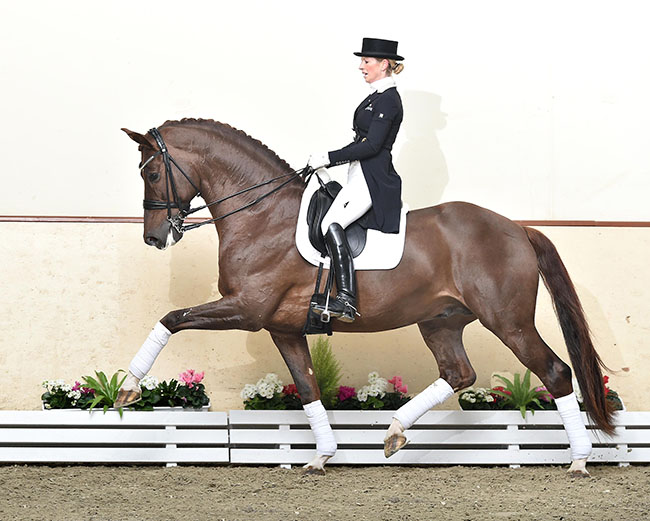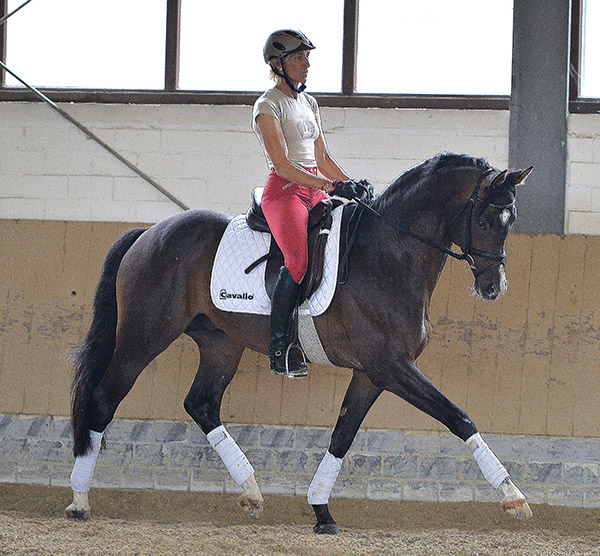Nowhere in The Training Scale is the confusion greater than in this principle – Losgelassenheit…
To illustrate how inter-connected the Training Scale really is, the late Dr Reiner Klimke in his book, Basic Training of the Young horse, has the Losgelassenheit principle as his first, then followed by rhythm, while the Official Handbook published by the German FN, has rhythm first. Obviously the two are so inter-twined, that really you cannot imagine establishing rhythm without some of the elements of Losgelassenheit, and straight away we run into an additional complication for those of us who speak English – some of the terms used in the training scale do not translate exactly from German to English.
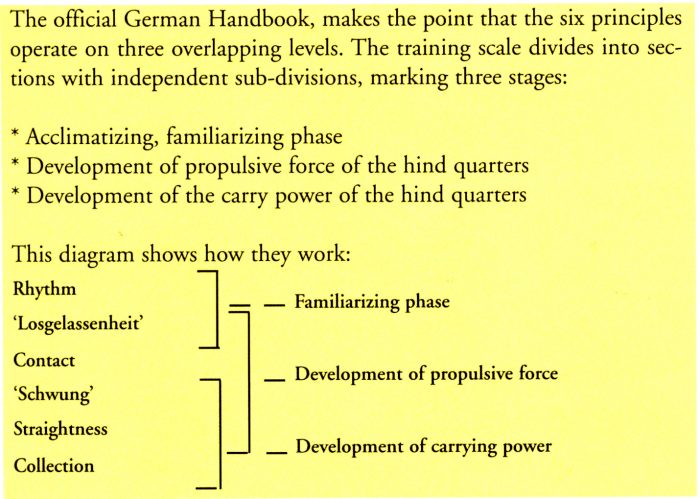
Losgelassenheit, the tendency has been to translate this as ‘relaxation’ and some instructors would have horse and rider jogging around the arena on a floppy loose rein until both were so ‘relaxed’ they were in danger of falling asleep. This is not what the Germans had in mind for their second principle. This principle has also been translated as ‘submission’ but this too, doesn’t exactly catch what we are after. Losgelassenheit is nicely defined by Reiner Klimke in his classic, Basic Training of the Young Horse:
“It means a horse freely gives all its muscles to use its whole body without resistance; the horse is supple and unconstrained.”
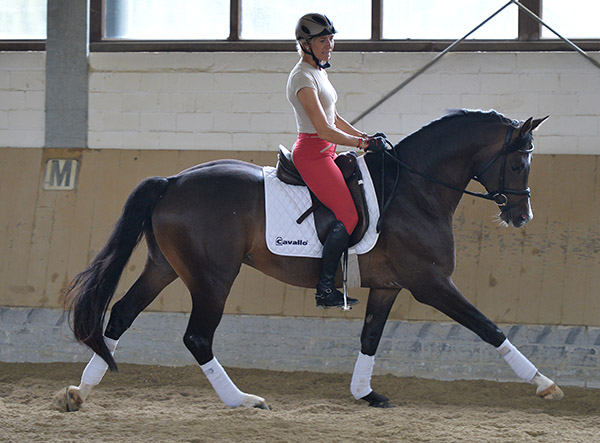
But again, the late Dr Klimke has a warning: “After achieving ‘losgelassenheit’ the the real work starts. Many riders spend too long with their horses long and low trying to make them perfectly ‘losgelassenheit’. They have the wrong idea of ‘losgelassenheit’ for the horse ends up going on its forehand and loses the natural brilliance of its gaits. Thus there is a danger in concentrating too much on losgelassenheit.”
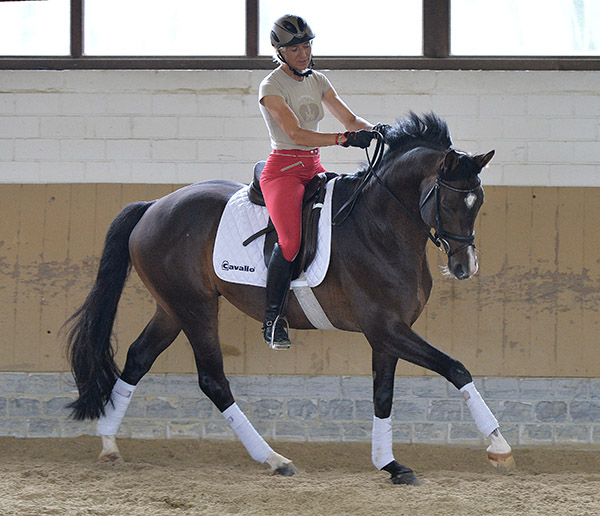
“These first lessons should have no design in training the mouth or the head: first the horse must become supple and acquire facility by turning easily in both directions.”
Francois Robichon de la Guérinière
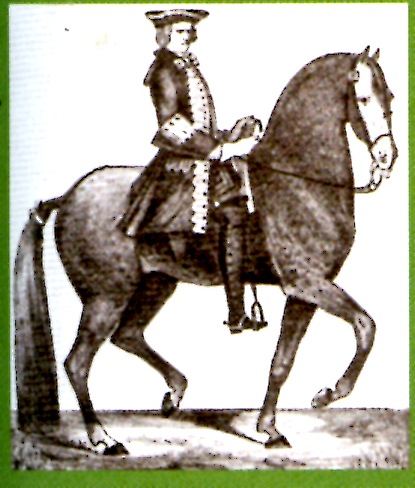
As Jo Hinnemann points out in his excellent book, The simplicity of dressage, this principle has a mental as well as a physical dimension:
“Losgelassenheit, which is physical as well as psychological is the key to success in riding horses. When schooling any difficult exercise, it always must be possible to immediately relax the horse again, at any time, both physically and psychologically.”
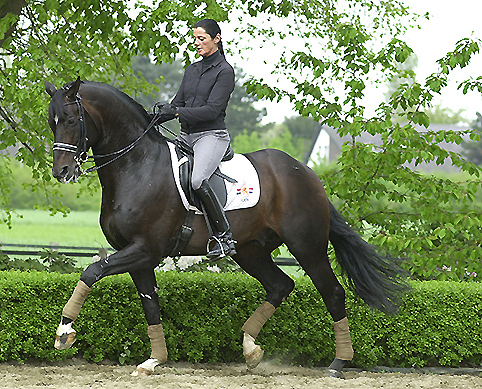
One of Jo Hinnemann’s star pupils, Coby van Baalen and Welt Hit 11
Jo also stresses the interdependence of the first two principles:
“Confirming a pure rhythm and striving for relaxation or losgelassenheit characterize the primary training goals of the habituation and familiarization phase – the first year and a half of schooling. When you begin working on a pure rhythm, you enable your horse to move in balance under the rider. Then the horse can ‘swing’, a pre requisite for losgelassenheit. Rhythm and losgelassenheit are mutually influential. A horse can only move in a pure rhythm if his back swings and his neck and back muscles contract and relax without force. A relaxed horse bends and extends his joints equally and he appears content.”
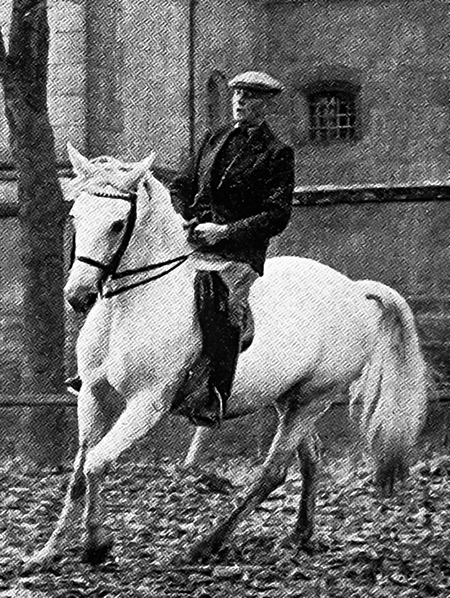
The young horse must already have reached a state of confidence and be familiar with the natural, regular trot. This means that, after it has worked off its initial tenseness, it should trot unconstrained with the rider, neither rushing or being behind the bit, with natural self-carriage on very light medium rein contact on a straight line.
Waldemar Seunig. The Essence of Horsemanship.
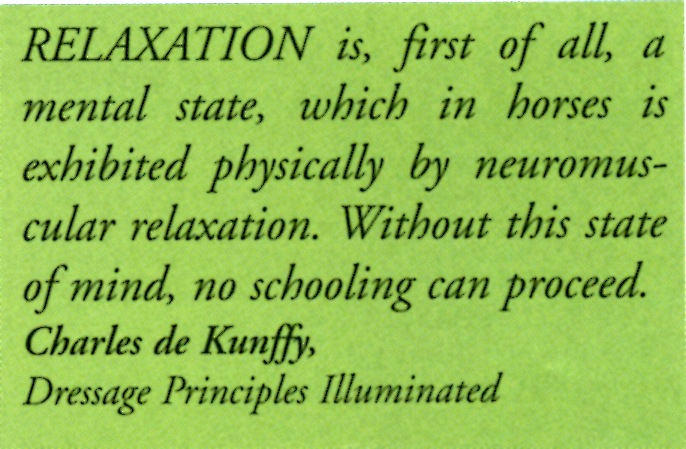
“Looseness is when there is no tension – every muscle is relaxed but the horse still moves with power. It is not loose and floppy. The horse must still be on the aids, the rider controls every stride, but the horse is loose and letting the aids through, not tense. The rider’s rein aids have to flow through the body to achieve Losgelassenheit; you feel it because your ability to sit improves. It is like sitting in your TV lounge chair, you feel the relaxation and the swinging through the back, and the precision of the beat. Loose but firm, and the horse is seeking the contact, not just with the rein, but he is happy to accept the seat and the leg aids as well.”
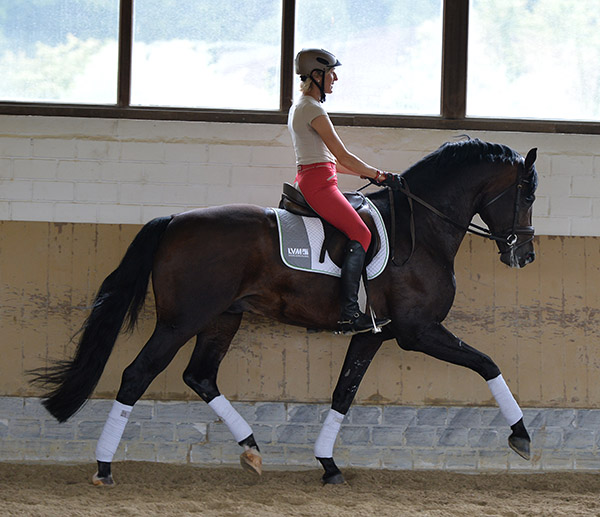
“Loose but controlled, and definitely not asleep, totally alert, active, and willing.
If he is not willing, he cannot be Losgelassenheit – the horse must take you there by himself, with very minimal aids.”
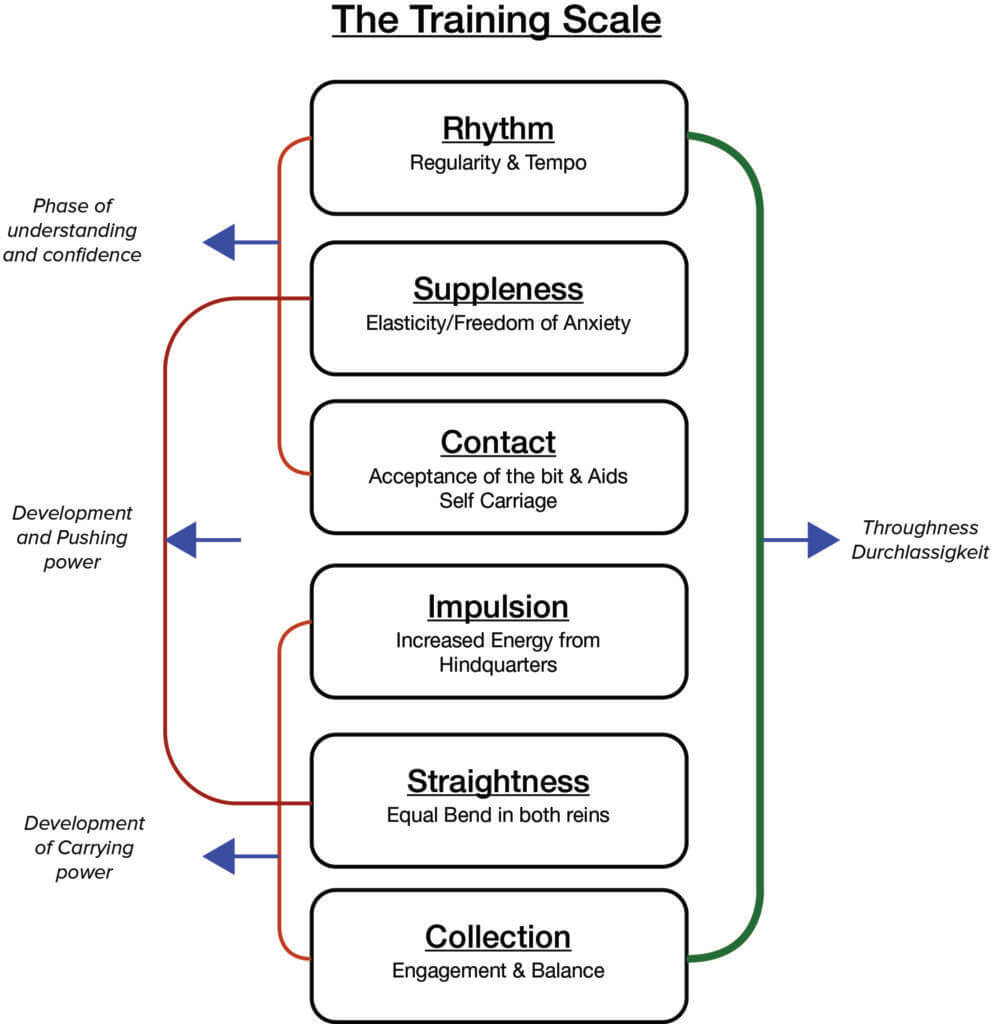
Lots of top European stallions are available from International Horse Breeders, stallions like Total Hope, see the entire range at www.ihb.com.au
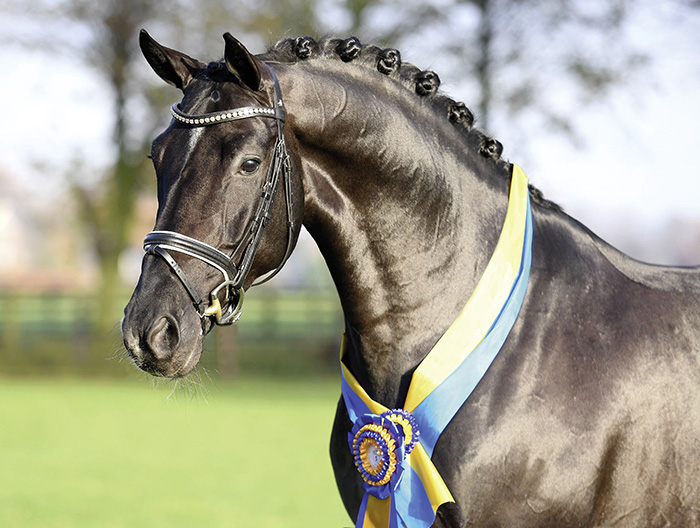
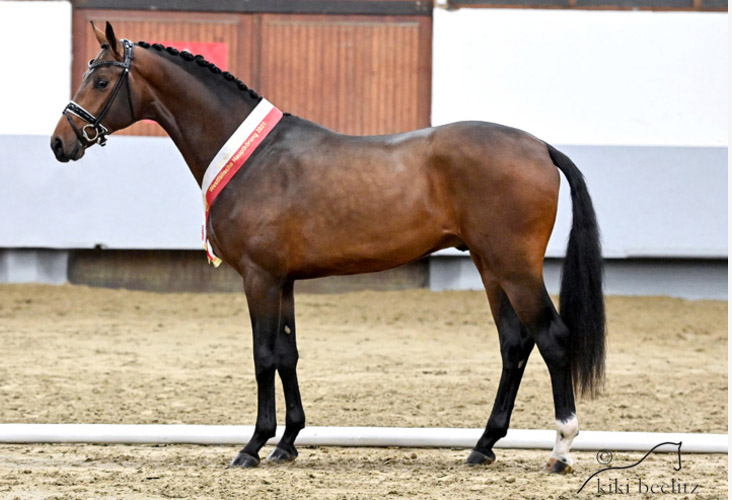
Escaneno
